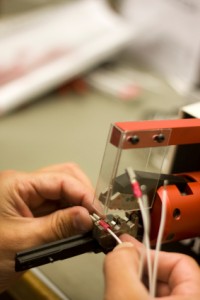$1 Billion Manufacturing Program Sinking Fast

Situation
A Fortune 100 company begins a multi-year $1 billion fiber optic cable manufacturing program. Eight months in, cost overruns exceed $100 million and the program behind schedule. Execs at the publicly-traded company hire David to turn around this high visibility disaster—as soon as possible—as four nationally-known engineering firms and two construction companies are onsite racking up billable hours.Diagnosis
David’s first step is to halt all project work for 30 days. He uses the time to interview a cross section of project personnel and plant executives. What he finds is a climate of mistrust dominated by strong personalities who engage in turf wars—the result of a recent merger in which little attention was given to merging corporate cultures. One is an R & D culture led by engineers more interested in designing the best cable than bringing products to market. The other is a traditionally-organized service company laden with cumbersome and bureaucratic procedures. Project plans are inadequate for the complexity of the projects, David discovers, and project managers routinely ignore established procedures and financial controls. The only thing people from both cultures agree on is that they don’t want an outsider coming in to impose order.Solution
Recognizing a lack of both expertise and discipline in project management, David writes a lifecycle methodology to capture his own time-tested methods and make the process repeatable.
Next, he notifies project managers that they will be held accountable for their results and calls for more frequent status reports.
David organizes the program into 25 inter-related projects, conducts a detailed review of each, and asks tough questions such as:
- How was this budget developed? Is it accurate?
- Have we listed all project tasks?
- Is there a cheaper way to accomplish the same goal?
Finally, David brings in certified project managers to lead half the projects. He directs the other half, personally mentoring the company’s own project managers to become self-sufficient at managing commercial projects. successfully.
Results
Eighteen months later the cable manufacturing program is on its way to profitability. David has recovered $100 million, restored positive momentum, and instilled accountability throughout the Atlanta plant.
The company is so pleased that it adopts his methodology for all capital projects world-wide and puts the Atlanta program management office—which David installed—in charge of initiating and tracking capital projects in all its locations.
